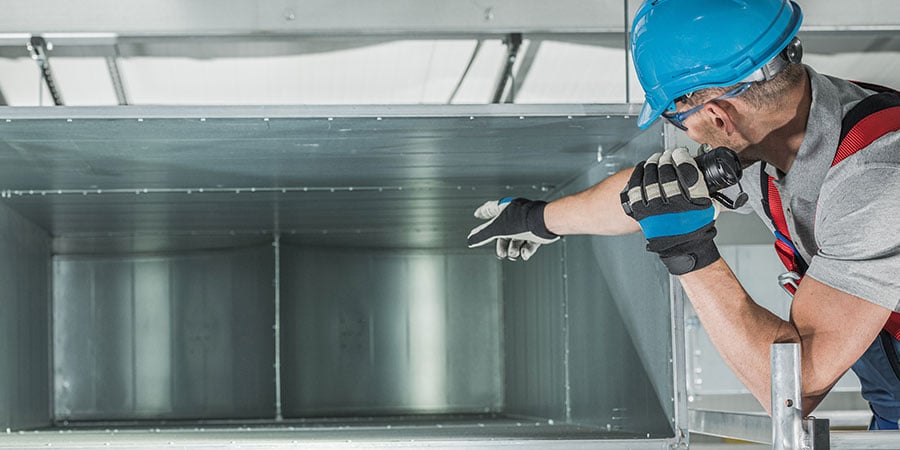Share this
Your Guide on How to Improve Indoor Air Quality
by HEPACART on Apr 04, 2023

Our society has a lot of discussions about air pollutants and ways to ensure that our outside air quality is clean and breathable. However, indoor air quality (IAQ) is just as important. The U.S. Environmental Protection Agency claims that the average person spends 90% of their time indoors. While this may not be true for everyone, it can be a surprising statistic.

If the average person spends more time indoors than out, ensuring indoor air quality is free of harmful particulate matter is critical. Here, we want to explain how to improve indoor air quality and protect your facility’s employees and patients while maintaining your day-to-day operations.
What is Indoor Air Quality?
First, we must understand what precisely indoor air quality is and why poor IAQ can harm those in your facility. Indoor air quality is a way to measure the air quality of a building and any effects it may have on those inside. When pollutant sources and tiny particulate matter infiltrate the indoor air, it can make it harmful for a person to breathe. Indoor air quality can affect a person’s health, comfort, and productivity.
Poor indoor air quality can negatively affect a person’s health. Some may have small reactions like eye, nose, and throat irritation, while others may experience more severe health concerns. Respiratory disease and cancer are common when exposed to poor IAQ over extended periods. Workers in your facility should not worry about their workplace’s air quality. Instead, they should have peace of mind knowing that their facility managers are doing everything they can to ensure their building has clean air.
Common Concerns About Poor IAQ During Construction
When your facility is under construction, sawdust, plaster, sawdust, fiberglass, mold spores, and volatile organic compounds (VOCs) can be emitted into the air. When these tiny particles are released, they can travel throughout the air and building to expose more people to the negative effects of poor IAQ. When it is time for a construction project to begin, it can be a serious concern for those in healthcare or educational facility.
These facilities already see people with weak or compromised immune systems that can be even more susceptible to the effects of particulate matter. Once you know the negative effects of poor indoor air quality, you can ensure proper steps are in place to keep IAQ healthy – even in a construction zone.
Simple Steps to Combat Poor IAQ
Regardless of your facility’s future construction plans, every facility manager should ensure proper steps are taken to prevent indoor air quality from declining. A building with high-quality IAQ will promote better health, enhanced productivity, and increased comfort. Here are three simple steps you can take to ensure those in your facility remain healthy.
Change Filters Regularly
You have a common air-purifying device right at your fingertips. Air conditioning units work hard to regulate indoor air temperatures, but they filter out some larger air pollutants as they work. However, there is one important element that often gets overlooked. The air filters in your HVAC unit will need to be replaced periodically. As your daily to-do list increases, it can be easy to put off inspecting your filters. Keeping this chore in mind can help ensure your HVAC unit properly filters through air particles.
Invest in Air Filtration Systems
Filtration air cleaners add another layer of protection by working hard to remove harmful contaminants. An air cleaner can easily trap smaller particles like dust and pollen. However, investing in a medical-grade high-efficiency particulate air (HEPA) filter can ensure you reach an even better level of indoor air quality.

These filters are extremely efficient and can trap 99.97% of particles that are 0.3 microns or larger. HEPA filters are an excellent way to ensure clean air in your facility because they trap tiny particles that other filters would miss.
Improve Ventilation
Indoor air quality can be greatly affected by proper ventilation. A well-ventilated facility will allow harmful particulate matter to travel out of your building and away from those inside. Think of it as a way to flush out any harmful particles. With ventilation, you always need to ensure that there is enough fresh air entering your space and that it is properly distributed throughout the whole facility. Opening windows is a great way to add extra ventilation when the outdoor air quality is nice and the weather permits.
What Does High-Quality IAQ Look Like, and How Can I Achieve It?
Knowing when your facility’s indoor air quality is poor can be hard. Some employees in your faculty may not show immediate health symptoms. However, one way to know if your IAQ is poor is by evaluating how your building smells and feels. It is a good sign that the IAQ needs extra attention if it has a musty odor or feels hot and stuffy.
Meanwhile, a facility with proper indoor air quality will feel more comfortable, and those in the facility will not experience any symptoms. Workers will feel motivated and more productive when your facility has high-quality IAQ. A study found that students' test scores improve when a school has proper indoor air quality. The same goes for every other facility; when the IAQ is good, your employees can focus on their work distraction-free.
Protection Starts With Air Quality
We hope you have realized how important it is to create an atmosphere encourages good health, comfort, and productivity. That starts with having high-quality indoor air. If you want to improve your facility, the first place you should look is the steps you have in place to promote clean air. If you still have questions about improving indoor air quality, our free download, Ultimate Guide to Indoor Air Quality, will be a great resource.

